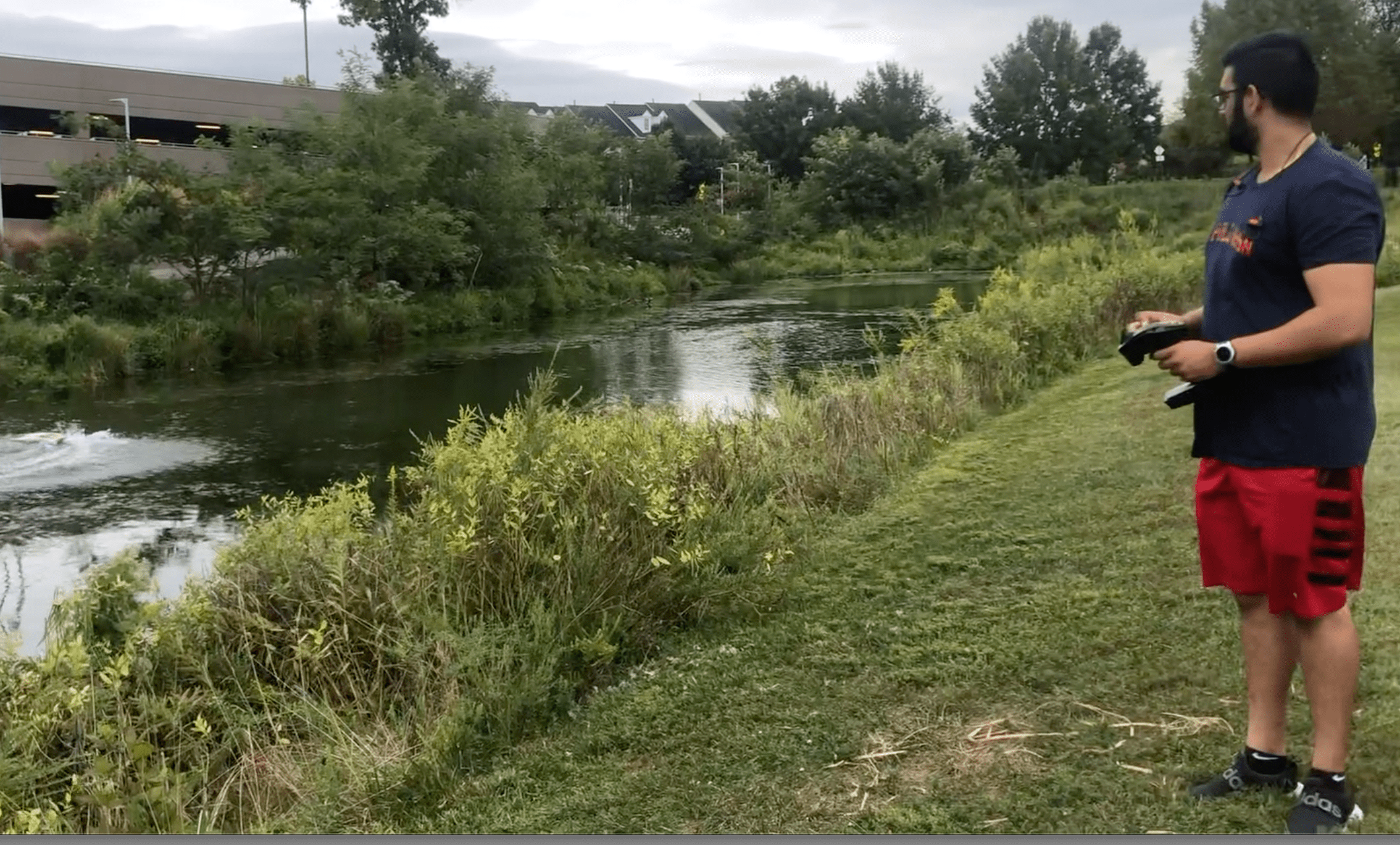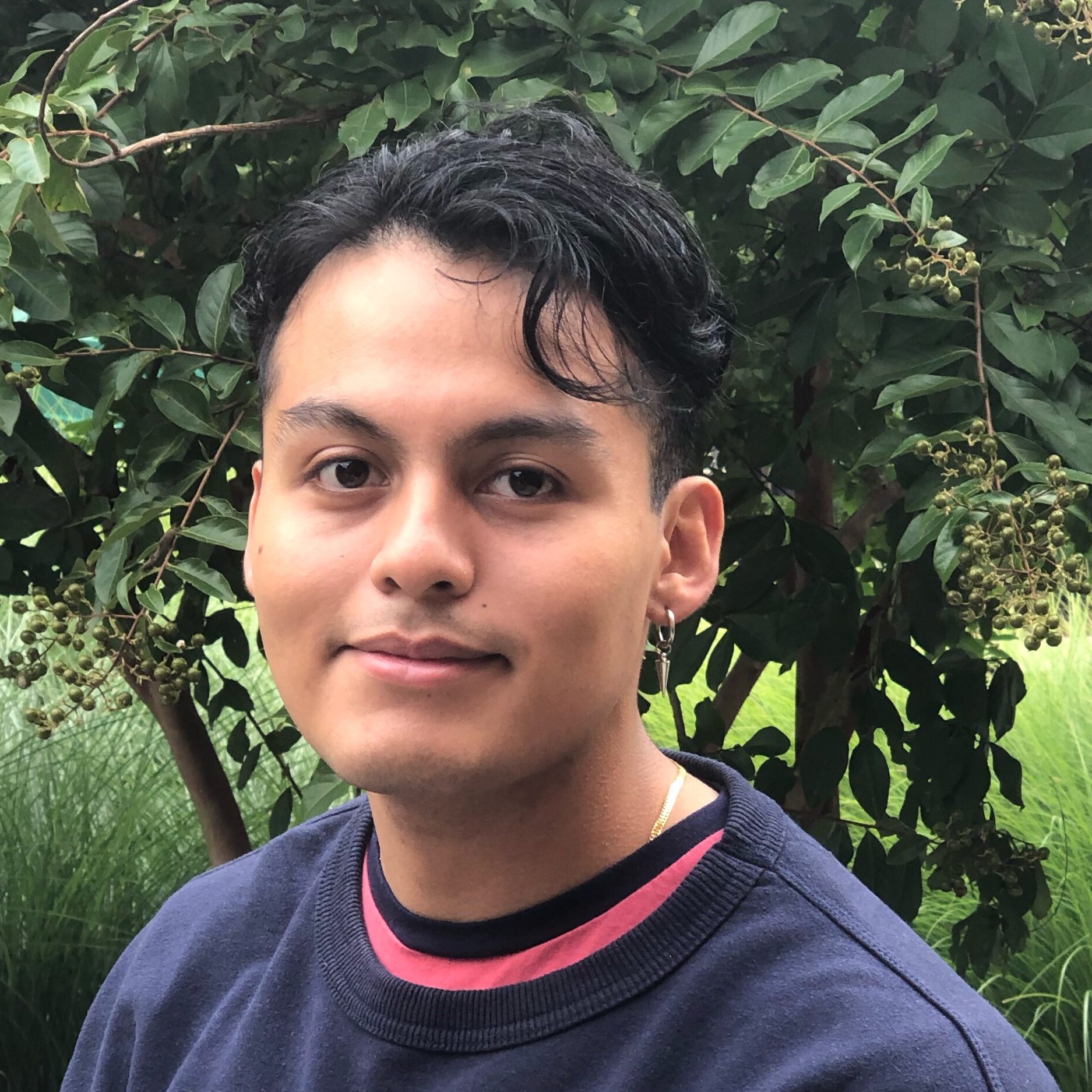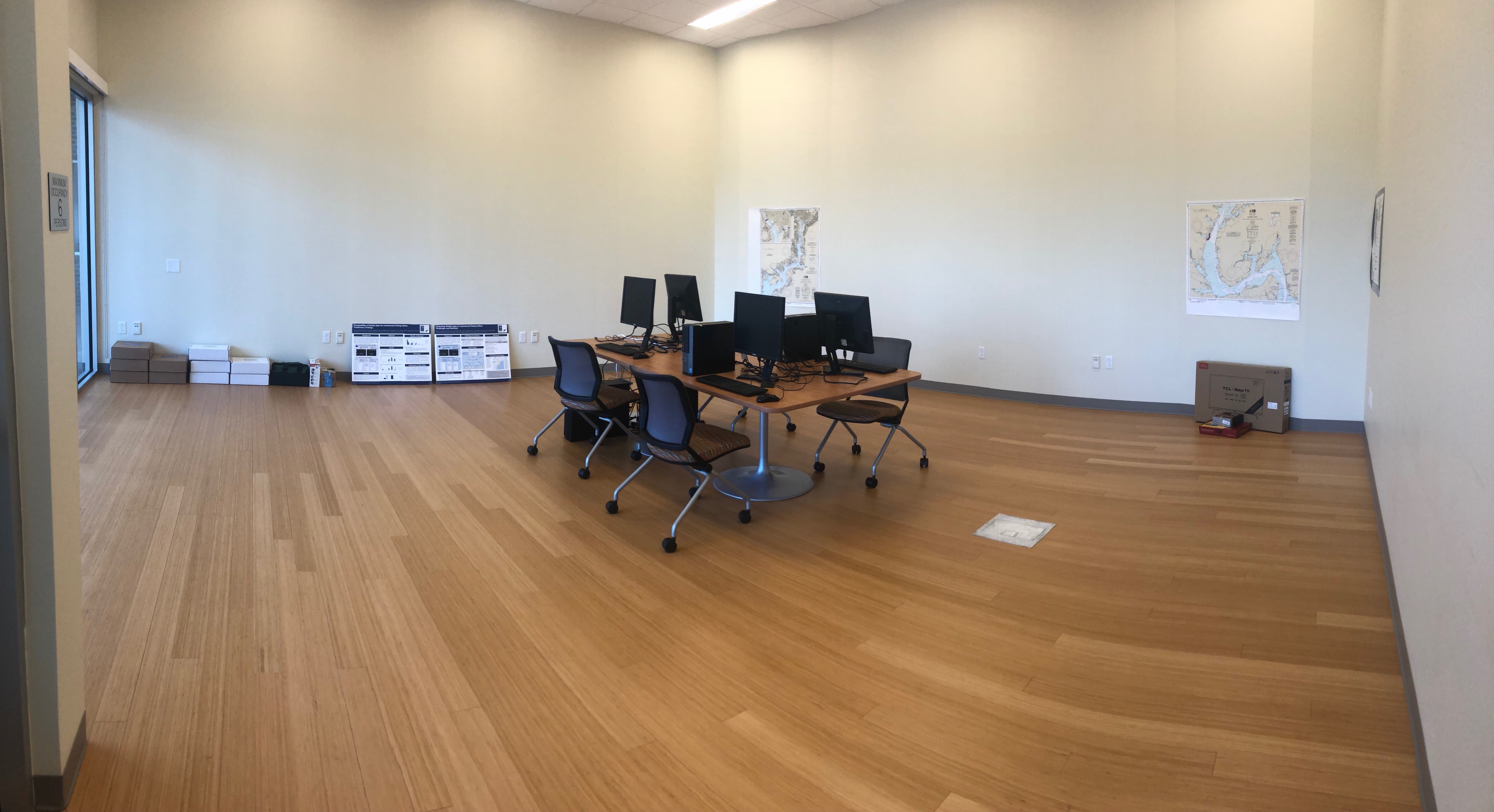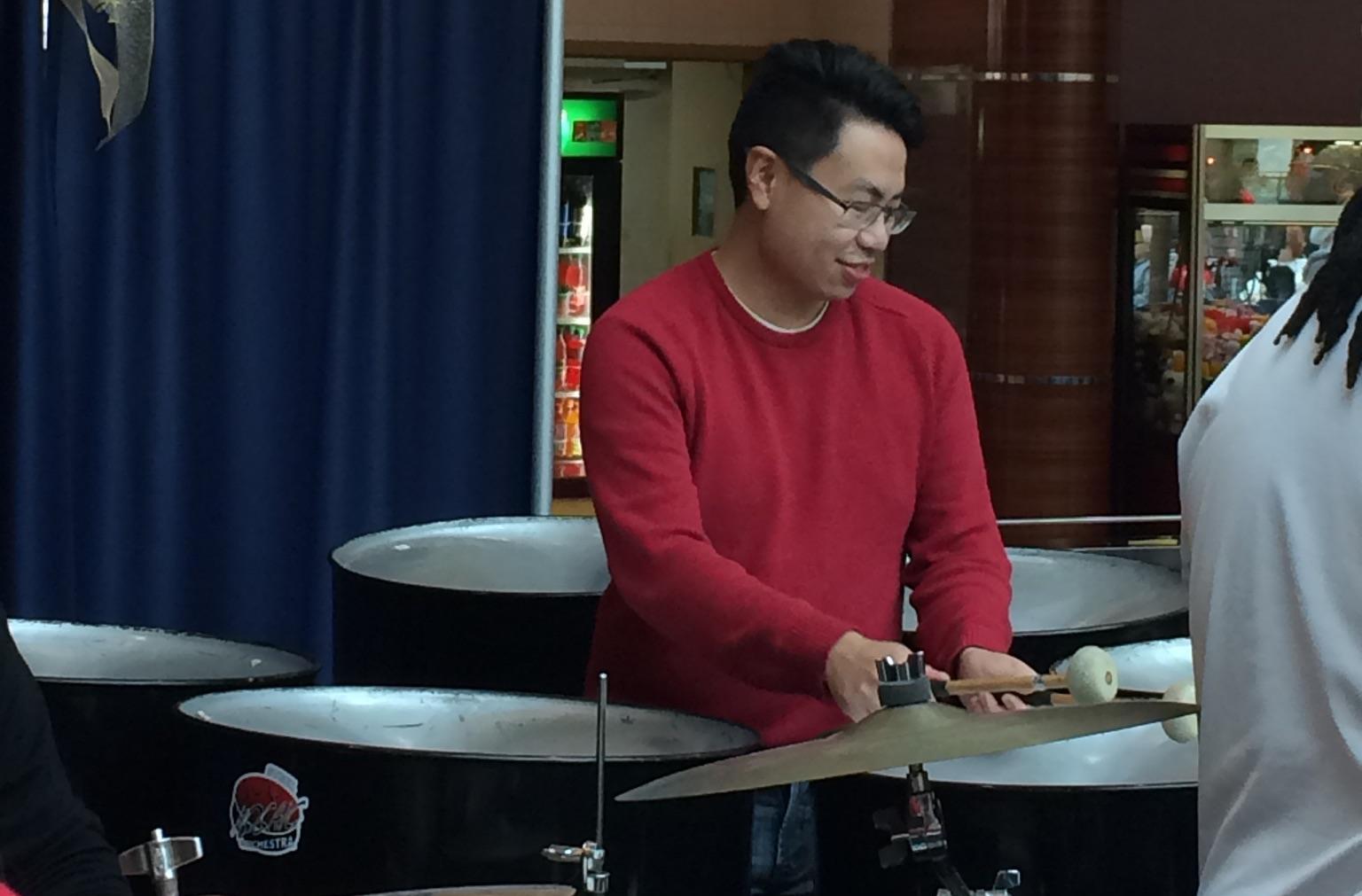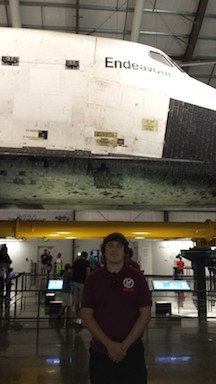The Vessel Dynamics Lab had a fabulous time at IEEE/MTS Oceans 2023 in Limerick, Ireland, where graduate student researcher Vanessa Barth presented on “Gaze controlled underwater remotely operated vehicle (ROV) to improve accessibility in maritime robotics” and undergrad researcher Sam Athapaththu presented his “Autonomous modular water collection system.”
Category Archives: Research Team
Autonomous modular water collection system
Athapaththu, A., Barth, V., Jones, V., and McCue, L., “Autonomous modular water collection system,” 2023 IEEE Oceans Conference, June 5-8, Limerick, Ireland.
Gaze controlled underwater remotely operated vehicle (ROV) to improve accessibility in maritime robotics
Barth, V., Jones, V., Athapaththu, A., and McCue, L., “Gaze controlled underwater remotely operated vehicle (ROV) to improve accessibility in maritime robotics,” 2023 IEEE Oceans Conference, June 5-8, Limerick, Ireland.
On the vertical and horizontal integration of robotics within engineering and computing education
Barth, V., Berg, C., Costa, P., Cummings, M., Denham, W., Handler, R., Hayes, M., Karri, D., Kathir, N., McCue, L., Miller Hooks, E., Nowzari, C., Reagle, C., Rosenblum, D., Rostobaya, V., Sanders, Q., Shishika, D., Shortle, J., and Sinanovic, E., “On the vertical and horizontal integration of robotics within engineering and computing education,” IUTAM Symposium on Optimal Guidance and Control for Autonomous Systems, March 15-17, 2023, Honolulu, Hawaii.
SeaPerch and SeaGlide Camp Implementation
McCue, L., Barth, V., and Hall, J., “SeaPerch and SeaGlide Camp Implementation,” ASEE Southeastern Section Conference, Fairfax, VA, March 12-14, 2023.
Buoy Team – Autonomous Mini-Flip Ship
Capstone Team Buoy for the 2022-2023 academic year worked to prototype a (currently) remote controlled (aiming for autonomous) miniature version of the FLIP ship. Here is a brief example of sea trials in the horizontal configuration.
Team Poseidon – Sprint Capable Underwater Glider
One of our 2022-2023 capstone projects was the design and build of a sprint capable underwater glider. Check out their video here.
Demonstrating eye gaze control for a BlueROV2
The paper is in progress, but here’s a sneak peak at Vanessa Barth’s work on eye gaze control using a BlueROV2 as the test platform. From the ROV’s eye-view through the window in the water tank, Vanessa can be spotted facing her computer around 28 seconds in.
RobotX 2022 Wrap-Up email
Friends,
Thank you all sincerely for your role in getting Mason to the 2022 RobotX competition in Penrith, Australia. Our travel team consisted of six individuals – three undergrads: Emina Sinanovic, Damion Colgrove, and Orion Colgrove, one grad student: Vanessa Barth, one alum: Reginald Lockhart, and me. Due to global shipping challenges, we made a tactical decision a couple months out not to ship the boat, and to participate technically as a “documentation only” team. That said, RoboNation generously provided us on-site workspace, and we traveled with our UAV and sensing packages, joining a team of teams with Lake Superior State University and Queensland University of Technology. Mason was able to tick off two competition tasks – the heartbeat message and UAV search and rescue. It was exciting to see the onsite team work, as lead Reggie kept everyone on task, optimistic, and enthusiastic while rapidly tapping into resources from last year’s work, Emina and Vanessa rallied to make the heartbeat happen, and Orion and Damion successfully executed UAV waypoint navigation and perception, all supported by the months of effort students and alums put into the project over the last year, plus wonderful camaraderie from all on-site teams, particularly our LSSU/QUT newfound friends.
Over the course of the last year, we engaged 26 students from mechanical engineering, electrical and computer engineering, computer science, and systems engineering and operations research in this maritime robotics opportunity. This was made possible by amazing faculty mentors from each of those departments: Greg Stein, Jana Kosecka, Lance Sherry, Ali Raz, Erion Plaku, Daigo Shishika, Cameron Nowzari, and Nathan Kathir who oversees the ME department’s capstone program, industry sponsors Gibbs & Cox, Beck Foundation, and the US Government, our volunteer “customer” and source of RobotX knowledge extraordinaire CAPT Dave Edwards, and the stupendous Mason support we received including, but not limited to, Ardiana Brahja for purchasing, Johnnie Hall with prototyping and machining, Melissa Perez and Zachary Machuga on export compliance and shipping, and Kim Goodwin-Slater and Kayla Hine on finance.
Julianna Smith and the whole team at RoboNation and Kelly Cooper at ONR – thank you so much for this opportunity and rolling with us when we made our tactical shift. Travis Moscicki, thank you for your patience and coaching on the heartbeat. Justin Hechinger at Camzilla, thank you for making sure our drone would have power once we got to Australia. To the volunteers from the Model Aeronautical Association of Australia – thank you for keeping things safe and lively. And to the best volunteer embedded judge a team could ask for – Julie Young, big thanks for your wisdom, positivity, and reminders to take lots of photos and enjoy the experience. On the topic of photos, attached are two of my favorites – the Mason team on site and the LSSU/QUT/Mason megateam.
Thank you all, and looking forward to 2024!
Samuel Athapaththu
Samuel Athapaththu is an undergrad at Mason starting his senior year this fall in Mechanical Engineering. He is currently working as a research assistant studying ways to acquire water samples on autonomous underwater vehicles. He enjoys building and designing solutions to challenging problems, and in his free time enjoys working out, spending time with family and friends, and exploring new places.

The Mason Mechanical Engineer
Check out podcast episode 6 of The Mason Mechanical Engineer which includes conversations with RobotX team members!
Vanessa Barth
Vanessa joined the Vessel Dynamics Lab as a PhD student in Spring 2022. She received her Bachelor’s degree in Mechanical Engineering from George Mason University, where she loved the environment so much she decided to stay for graduate school. Her research interests include autonomous systems, dynamics and controls, and machine learning. She is currently working on accessible control of an ROV using an eye tracker. Outside the lab, Vanessa enjoys cooking, solving jigsaw puzzles, and playing with her dogs.

Understanding Quantum Technologies
The latest episode of The Mason Mechanical Engineer podcast is out, featuring a conversation with Pilgyu Kang and Patrick Vora talking about quantum science, engineering, and computing. Check it out on your podcast platform of choice or at: https://anchor.fm/mason-meche/episodes/You-are-not-an-atom-e1cs41f.
WAM-V
We are fielding a team for the 2022 RobotX challenge! So very excited after the first assembly of our WAM-V a few weeks ago. Exciting things on the horizon in maritime robotics at Mason!
The Mason Mechanical Engineer
My department has launched a podcast! The first few episodes are out, with the latest including interviews with a very inspirational Mason alum Jazzmin Robinson as well as NAWCAD’s Director of Engineering Education and Research Partnerships Theresa Shafer. Search for the “Mason Mechanical Engineer” on your preferred podcast platform or click here.
Mason PEP Team Takes 2nd Place in Unmanned Category of Electric Boat Competition
Congratulations to the Mason PEP team on their 2nd place finish in the “unmanned” category of ASNE’s Promoting Electric Propulsion competition held at the 2021 Multi-Agency Craft Conference (MACC). This represented the culmination of three senior design team’s efforts – a hull team and propulsion team in the 2019-2020 academic year, and a holistic team to pull it all together in the 2020-2021 academic year. Despite pandemic, these students’ hard work paid off the minute their boat entered the water. Proud of y’all. Well done!
Undergrad researcher Cheryl Blanchard wraps up commercial fishing sleep monitoring device prototyping effort
Cheryl did great work during the Spring term of 2021 looking at developing a purpose-built device to measure sleep aboard a fishing vessel, taking into consideration constraints we’ve seen with commercial off the shelf devices. Check out her presentation at: https://celebration.oscar.gmu.edu/development-of-a-prototype-sleep-monitoring-device-for-use-in-the-commercial-fishing-environment/.
Team Leviathan – Open Water Testing
Mason’s Team Leviathan had a successful first day of open water testing in advance of the 2021 Promoting Electric Propulsion (PEP) competition!
Vessel Dynamics Lab Growing – Now Seeking Post-Doc
The Vessel Dynamics Laboratory is looking to add a post-doctoral researcher to the team. The ideal candidate would have expertise in agent based modeling and/or smoothed particle hydrodynamics (SPH), past work experience with human subjects, and an enthusiasm for occupational safety research. If this sounds like you or someone you know, please contact Leigh!
CDR Brook Sherman becomes Commanding Officer USCG Base Elizabeth City
Congratulations to Vessel Dynamics lab alum Brook Sherman – USCG Base Elizabeth City is in good hands!
A coupled SPH-FEM Solver for Modeling Surface Effect Ship (SES) Bow Seal Dynamics
Gilbert, J. and McCue, L., “A coupled SPH-FEM Solver for Modeling Surface Effect Ship (SES) Bow Seal Dynamics,” Virtual 39th International Conference on Ocean, Offshore & Arctic Engineering (OMAE) 2020, June 28-July 3, 2020.
Vessel Dynamics Lab Alum Rosa Avalos-Warren in the News
Vessel Dynamics Lab alum Rosa Avalos-Warren is making news for her support of the SpaceX Crew Dragon launch. Check out NASA Goddard’s website to read the full story! So proud of you Rosa!
Dhawal Bhanderi 3d printing PPE
Check out this great article about Dhawal Bhanderi’s work to help supply Hampton Roads hospitals with PPE: https://volgenau.gmu.edu/news/584831
Autonomous running of the Vessel Dynamics Lab’s Mako
This is an RC to autonomous conversion done by undergraduate researcher Dhawal Bhanderi. In this video, at 4x speed, it starts off running autonomously, Dhawal takes control as it goes under the dock, then returns it to autonomous waypoint tracking. Check out the video:
Team Barracuda begins propulsion design work for PEP competition
Mason is fielding two teams of students for the 2020 ASNE Promoting Electric Propulsion (PEP) competition, one team focused on hull design and the other on the propulsion system. The propulsion team, Barracuda, has produced this handy flier outlining how they are starting down their design path!
Maiden voyage of the Pro Boat Veles 29
Moises Angulo joins research team!
Moises is a senior studying Mechanical Engineering at George Mason University. He is currently working on doing high speed planing hull simulations to represent the Generic Prismatic Planing Hull (GPPH). After graduation, he plans on going to grad school to pursue a PhD in Aerospace Engineering. Outside of academia you can find him reading fiction novels, playing super smash bros, and working out.
Welcome Dhawal Bhanderi!
Vessel Dynamics Laboratory
As we get ready to kick off the 2019-2020 academic year, I’m thrilled to be settling into new lab space at GMU’s Potomac Science Center. While furniture is still on order, computing power has arrived along with enough SeaPerch and SeaGlide kits to last us through some kickoff STEM outreach activities. If you’re in the neighborhood, come by and visit: 1203 Potomac Science Center, 650 Mason Ferry Ave, Woodbridge VA!
Evan Lee receives job promotion!
Evan has been selected as a project lead in the newly formed Research and Development Execution Branch at Combatant Craft Division.
David Hansch, MS
Davy Hansch completed an interesting study on the influence of water depth on roll damping and roll period. Read it online here.
Lauren Hanyok, MS
Lauren Hanyok’s fascinating master’s thesis studied motion induced interruptions for a space capsule at splash down.
W. Robert Story, MS
Rob Story’s 2009 MS thesis looking at application of Lypaunov exponents to anticipate intact and damaged stability issues won a Conference of Southern Graduate Schools’ ETD Master’s Thesis Award in the “Innovative Application of Technology to Scholarship in a Master’s Thesis” category.
Divyanshu Agarwal, MS
Divy Agarwal did a very interesting MS thesis studying how fractional differential equations can be used to model roll damping. His thesis is available online.
Evan Lee, PhD
Evan Lee’s 2014 doctoral dissertation advanced the state of the art of our understanding of the hydrodynamics of stepped planing hulls. Read his thesis online here.
Michele Cooper, PhD
Michele Cooper’s PhD presented a holistic look at numerous challenges related to ship dynamics, from control design, to neural network prediction, to verification and validation. Download her outstanding thesis here.
John Gilbert, PhD
Dr. John Gilbert completed his PhD in June of 2015. His research included development of an accelerated coupled solver for fluid-structure interaction problems. His thesis can be found here, and he is currently research faculty at Virginia Tech.
Stephanie Sherman, MS
Stephanie Sherman completed her excellent MS on “Quantifying the Effects of Uncertainty in a Decentralized Model of the National Airspace System” in 2015. Read it online here.
Hello from GMU’s Volgenau School of Engineering
While this site has been dormant the last few years, it is back live now – I have re-entered academia joining the Mechanical Engineering faculty at George Mason University. Enthusiastic prospective students are encourage to reach out as I am actively recruiting PhD students.
David Allen, MS
David Allen wrapped a nice bow around the EUROPA project work with his MS thesis defended in October of 2014. His thesis is available online here.
From Science Fiction to Science Fact
Our NASA NIAC project to explore Europa is featured in the newly released NASA 360 video From Science Fiction to Science Fact! The entire video is great, and Europa specifically is discussed at 2:25 in.
Alton Luder
Alton Luder is the newest member of the research team joining us to continue the fine work Pankaj Kumar did related to coupling SPH and OpenFOAM simulations. Alton comes to us as a fellow Michigan alum (Go Blue!).
Tom Battista
Tom Battista is joining the team, co-advised by Prof. Craig Woolsey, working on dynamics and control of submarines in waves (for example, at periscope depth or surfaced). Tom is also campaigning for the best research team member photo.
John Gilbert awarded SMART scholarship
John Gilbert has received a prestigious SMART scholarship for the 2014-2015 academic year to further his PhD research in computational fluids. It is anticipated/hoped that upon graduation he will work for the Hull Response and Protection branch of the Survivability, Structures, and Materials department of Carderock. Way to go John!
Stephanie Sherman wins Virginia Space Grant Consortium Grant and Airport Cooperative Research Program Graduate Research Award
Update: Stephanie Sherman’s work on air traffic management has won her a Virginia Space Grant Consortium graduate student research grant and an Airport Cooperative Research Program Graduate Research Award! Stephanie is working to develop a computational model of air traffic based upon a smoothed particle hydrodynamics-esque definition of aircraft interactions (like particle interactions in SPH). Through this approach, her tool will be able to model stochastic aircraft characteristics in addition to deterministic characteristics. Fundamentally, she is trying to provide a tool which can help address two important and challenging problems:
- Model aircraft interactions in a decentralized control scheme versus the current centralized control approach (e.g. the bulk of aircraft interactions being governed by instructions from air traffic controllers).
- Model manned and unmanned aircraft interact with non-deterministic factors (e.g. pilot skill, aircraft handling, etc…)
Both of these topics are of interest for study as part of the Next Generation Air Transportation System (NextGen).
To learn more about her excellent work, follow the tag for S_Sherman.
Stephanie Sherman wins Virginia Space Grant Consortium Grant
Stephanie Sherman’s work on air traffic management has won her a Virginia Space Grant Consortium graduate student research grant! To learn more about her excellent work, follow the tag for S_Sherman.
John Gilbert lands NREIP Internship
Graduate student researcher John Gilbert has received a prestigious NREIP Summer Internship position with the Naval Surface Warfare Center, Carderock’s Combatant Craft Division. Go John!
Stephanie Sherman
Underwater Gas Expansion and Deflagration
The underwater combustion of a propane-air mixture in an acrylic cylinder is captured on the video linked here from multiple angles. This experiment, led by Van Jones with assistance from Kariann Vander Pol and John Gilbert, is designed to provide visual data and pressure time-histories for future CFD validation studies. We have submitted this to the APS Division of Fluid Dynamics gallery of fluid motion competition this year! More information, including an extended abstract and higher resolution version of the video can be found at: http://arxiv.org/abs/1310.3523.
Pankaj Kumar wins award
Just got this e-mail from former post-doc Pankaj Kumar: “I am happy to inform you that I have been awarded best group project in IHPC/ASTAR. This award is for developing Lattice Boltzmann Method (LBM) solver within the OpenFOAM framework. My job in this project was to develop finite difference- and finite volume- based LBM solvers in OpenFOAM.” Congratulations Pankaj!












